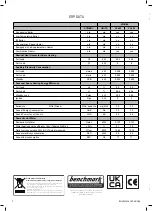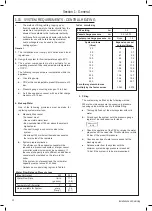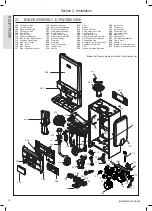
1.1 INTRODUCTION
The
Keston Combi
2
range of boilers are wall mounted,
condensing, combination gas boilers.
Features:
• High efficiency
• Full sequence
• Automatic spark ignition
• Low water content
• Fanned flue
The boiler is supplied fully assembled with a DHW plate heat
exchanger, diverter valve, circulating pump, pressure gauge,
PRV and CH expansion vessel.
Variable CH and DHW temperature controls are fitted on the
user control and the boiler features a DHW preheat facility.
The boiler includes as standard:
-
Automatic boiler bypass
-
Boiler frost protection
-
Daily pump and diverter valve exercise
The boiler casing is of white painted mild steel with a white
polymer front panel.
The boiler temperature controls are visibly located in the
control panel on the front of the boiler.
The heat exchanger is manufactured from cast aluminium.
The boiler is suitable for connection to fully pumped,
sealed heating systems ONLY. Adequate arrangements for
completely draining the system by provision of drain cocks
MUST be provided in the installation pipework.
Pipework from the boiler is routed downwards.
Data Plate
The boiler model and serial number are shown on the data
label which can be located on the bottom of the boiler casing,
shown in - Water & Gas Connection Diagram.
Refer to Section
1.14
1.2 OPERATION
With no demand for CH, the boiler fires only when DHW is
drawn off, or periodically for a few seconds without any DHW
draw-off, in order to maintain the DHW plate heat exchanger
in a heated condition. This only occurs if the “PREHEAT”
button is pressed and the display reads “PREHEAT ON or
PREHEAT TIMED”.
When there is a demand for CH, the heating system is
supplied at the selected temperature of between 30
o
C and
80
o
C, until DHW is drawn off. The full output from the boiler is
then directed via the diverter valve to the plate heat exchanger
to supply a nominal DHW draw-off of:
30 kW 12.4 l/min at 35ºC temperature rise.
35 kW 14.5 l/min at 35ºC temperature rise.
The DHW draw off rate specified above is the nominal that the
boiler flow regulator will give. Due to system variations and
seasonal temperature fluctuations DHW flow rates/temperature
rise will vary, requiring adjustment at the draw off tap.
At low DHW draw-off rates the maximum temperature may
exceed 65ºC.
The boiler features a comprehensive diagnostic system which
gives detailed information on the boiler status when operating,
and performance of key components to aid commissioning and
fault finding.
1.3 SAFE HANDLING
This boiler may require 2 or more operatives to move it to its
installation site, remove it from its packaging base and during
movement into its installation location. Manoeuvring the boiler
may include the use of a sack truck and involve lifting, pushing
and pulling.
Caution should be exercised during these operations.
Operatives should be knowledgeable in handling techniques
when performing these tasks and the following precautions
should be considered:
•
Grip the boiler at the base.
•
Be physically capable.
•
Use personal protective equipment as appropriate, e.g.
gloves, safety footwear.
During all manoeuvres and handling actions, every attempt
should be made to ensure the following unless unavoidable
and/or the weight is light.
•
Keep back straight.
•
Avoid twisting at the waist.
•
Avoid upper body/top heavy bending.
•
Always grip with the palm of the hand.
•
Use designated hand holds.
•
Keep load as close to the body as possible.
•
Always use assistance if required.
1.4 OPTIONAL ACCESSORIES
Please visit keston.co.uk to access the optional accessories for
this boiler.
1.5 SAFETY
Current Gas Safety (installation and use) regulations or
rules in force:
The appliance is suitable only for installation in the UK and
should be installed in accordance with the rules in force.
In the UK, installations must be carried out by a Gas Safe
Registered Engineer. It must be carried out in accordance with
the relevant requirements of the:
•
Gas Safety (Installation and Use) Regulations.
•
Appropriate Building Regulations, either The Building
Regulations, The Building Regulations (Scotland), Building
Regulations (Northern Ireland).
•
Water Fittings Regulations or Water byelaws in Scotland.
•
Current I.E.E. Wiring Regulations.
Where no specific instructions are given, reference should be
made to the relevant British Standard Code of Practice.
8
Installation and Servicing
Section 1 - General









































